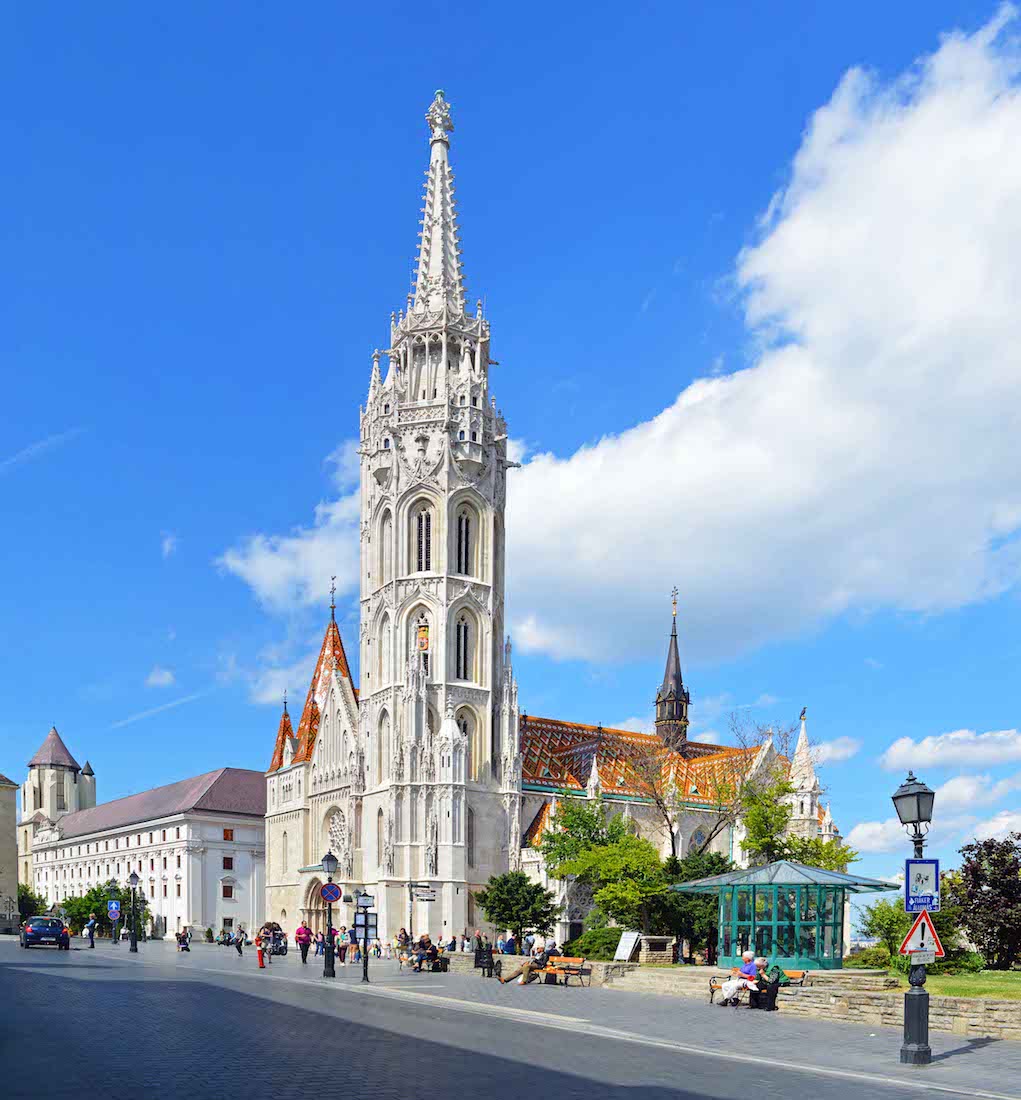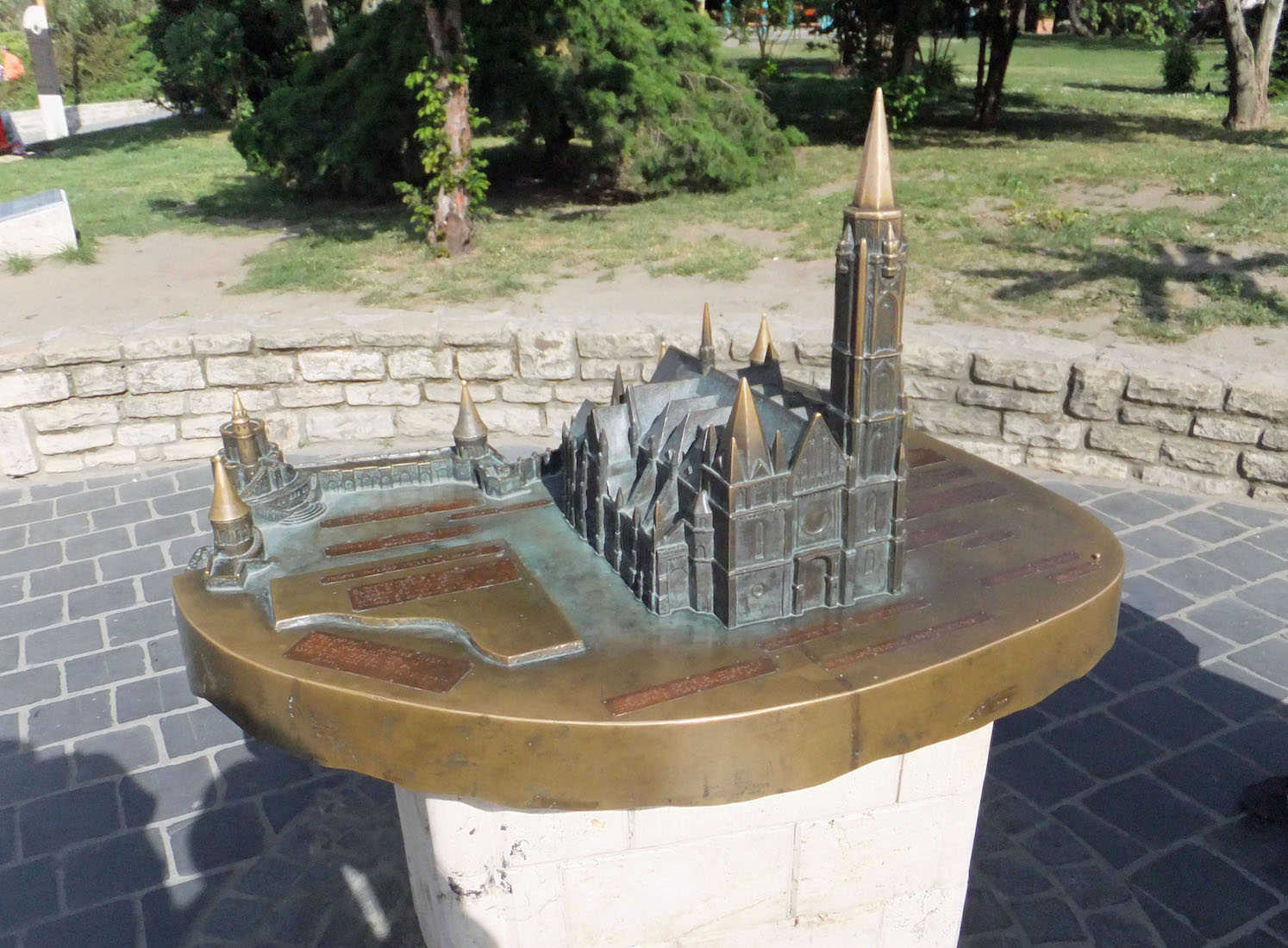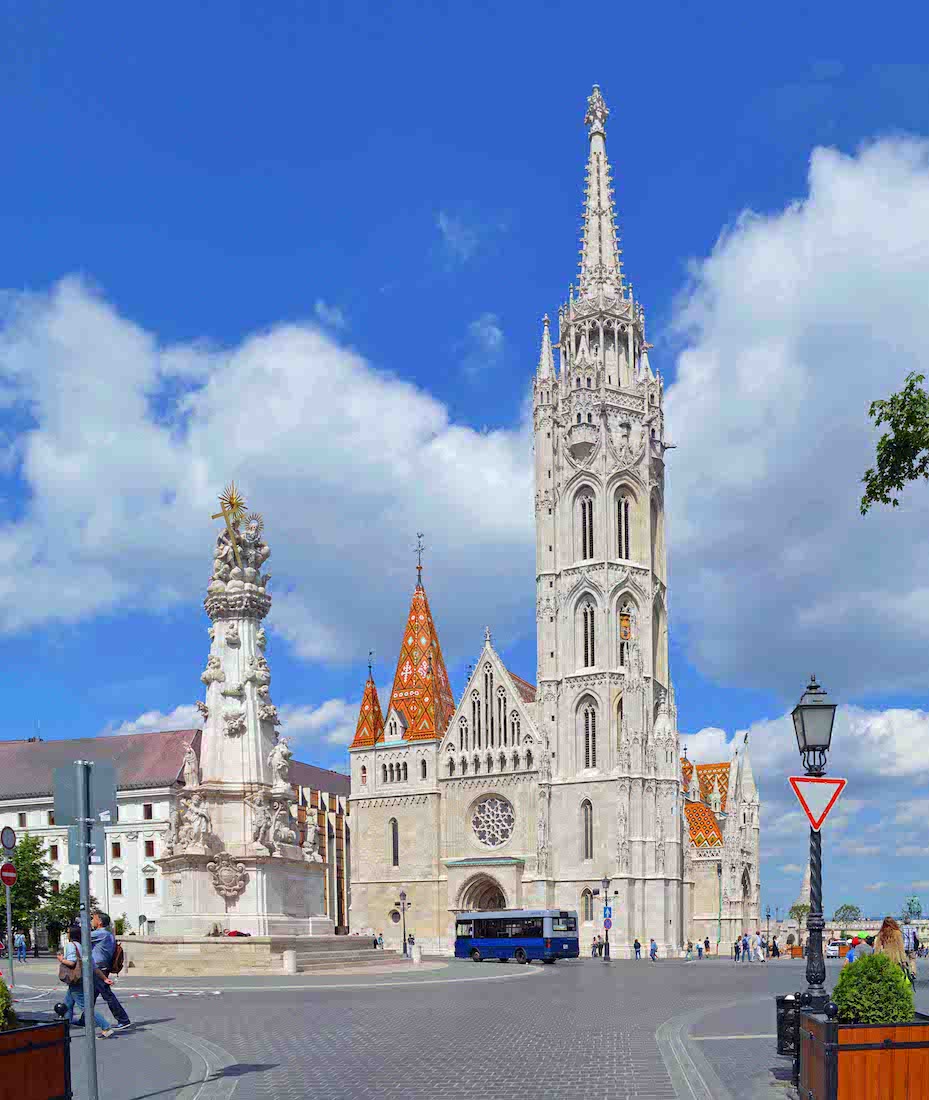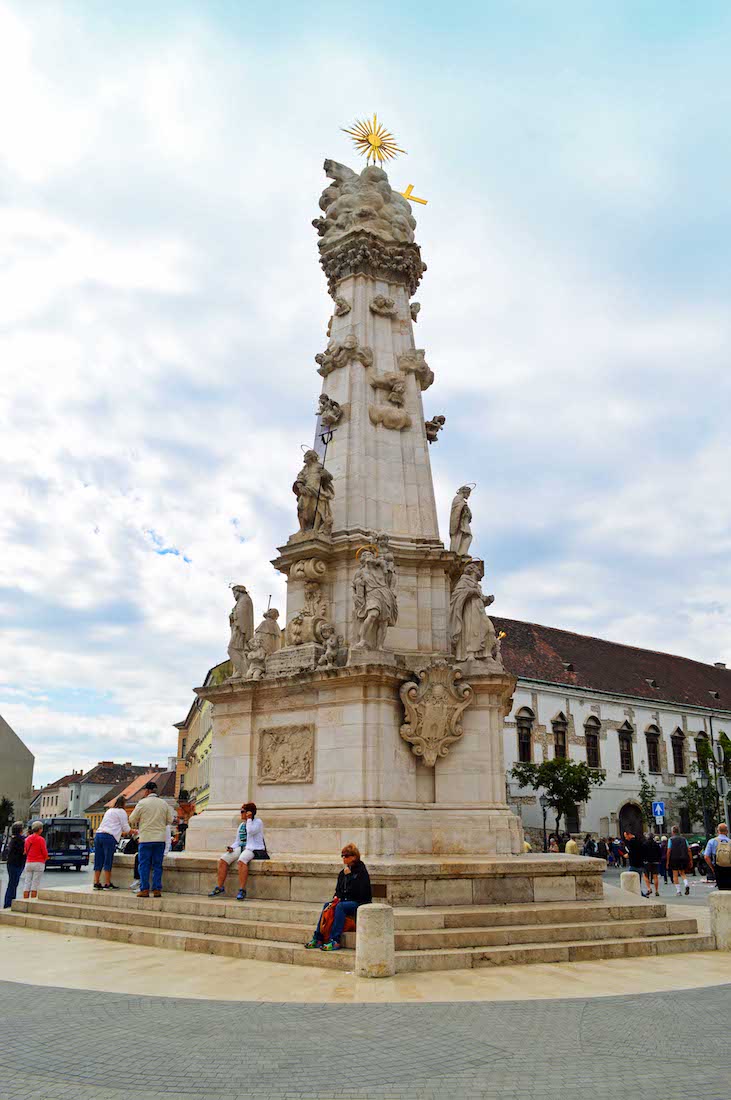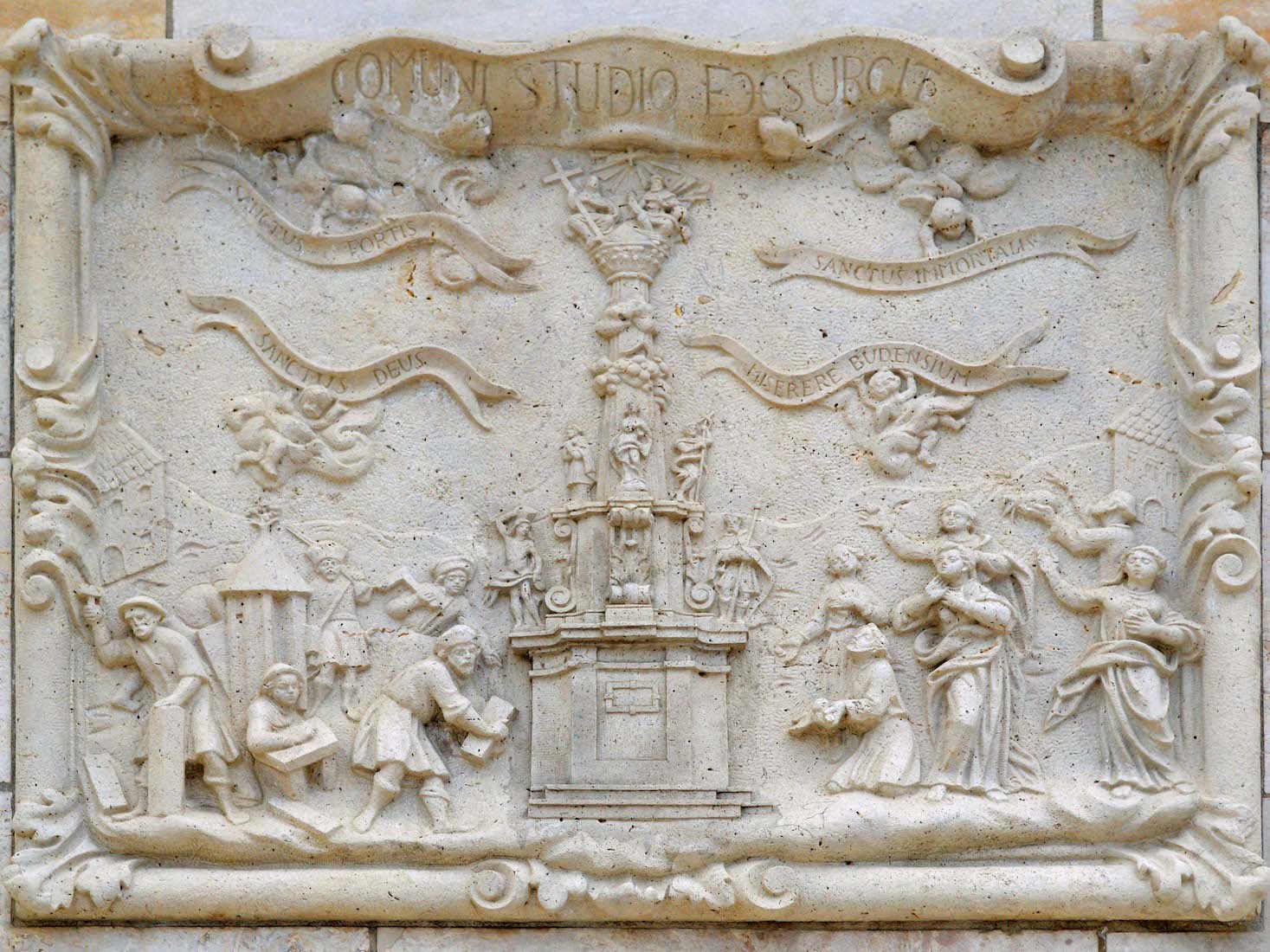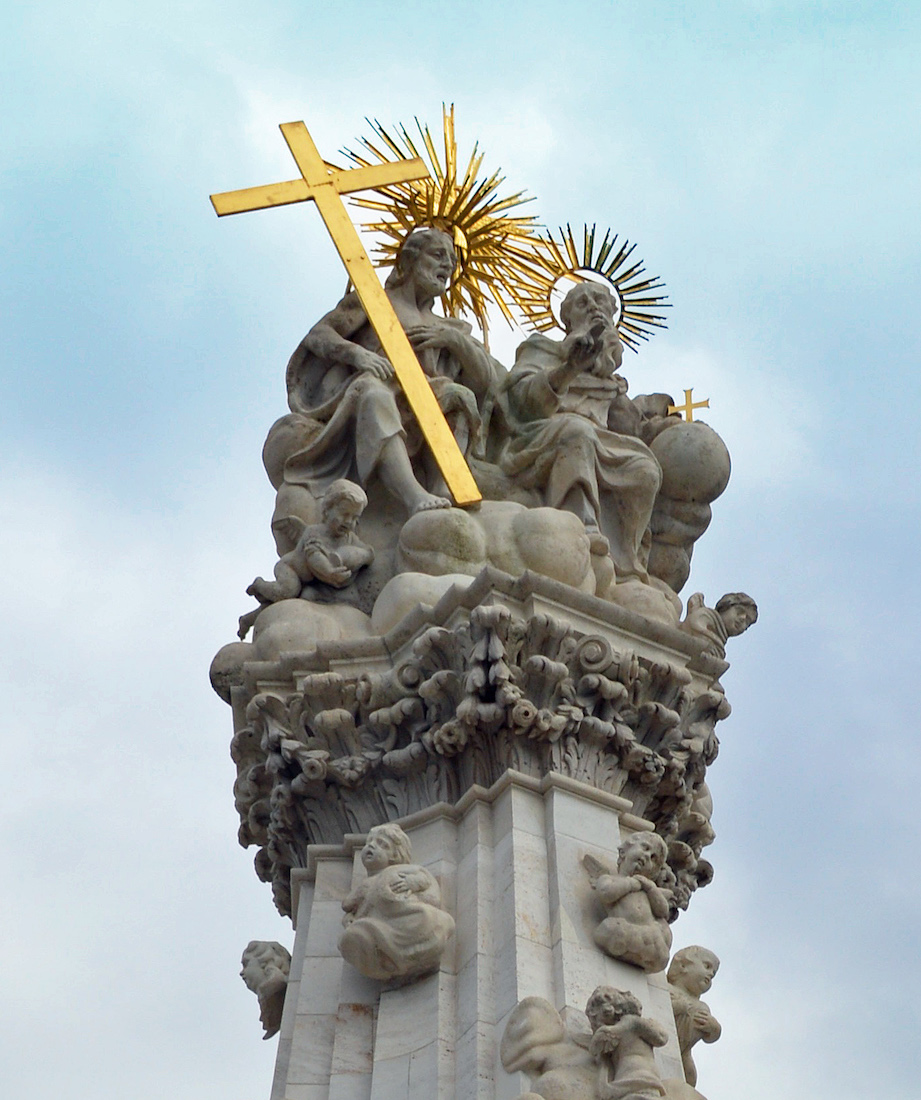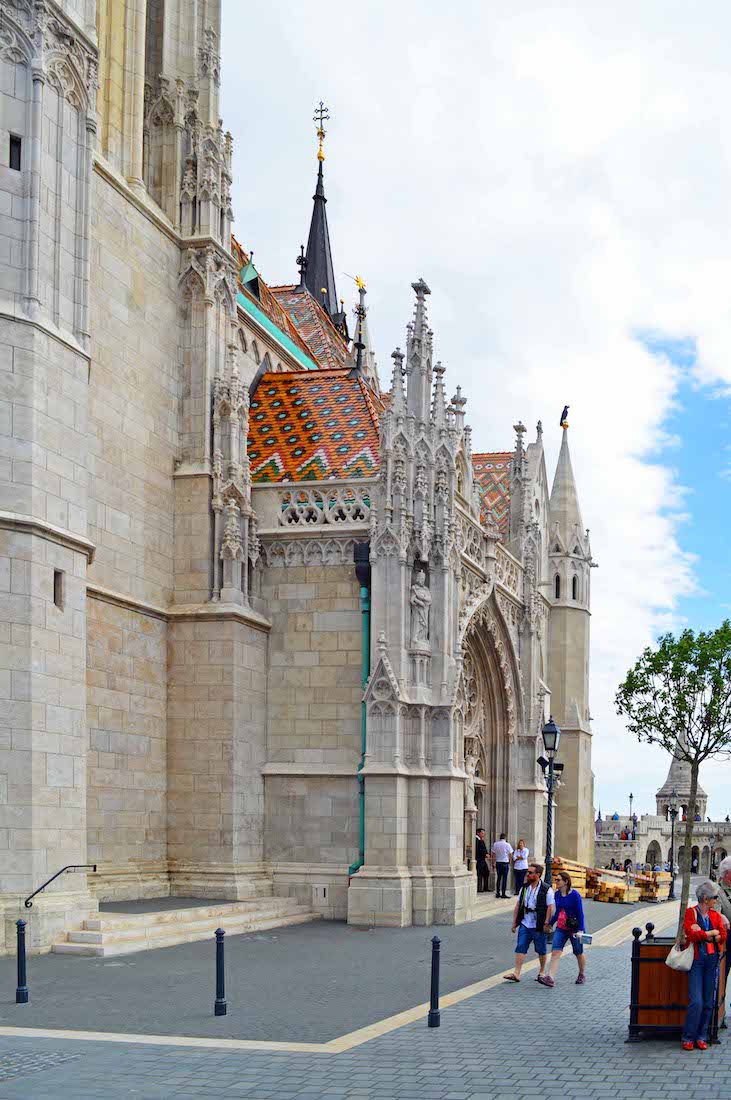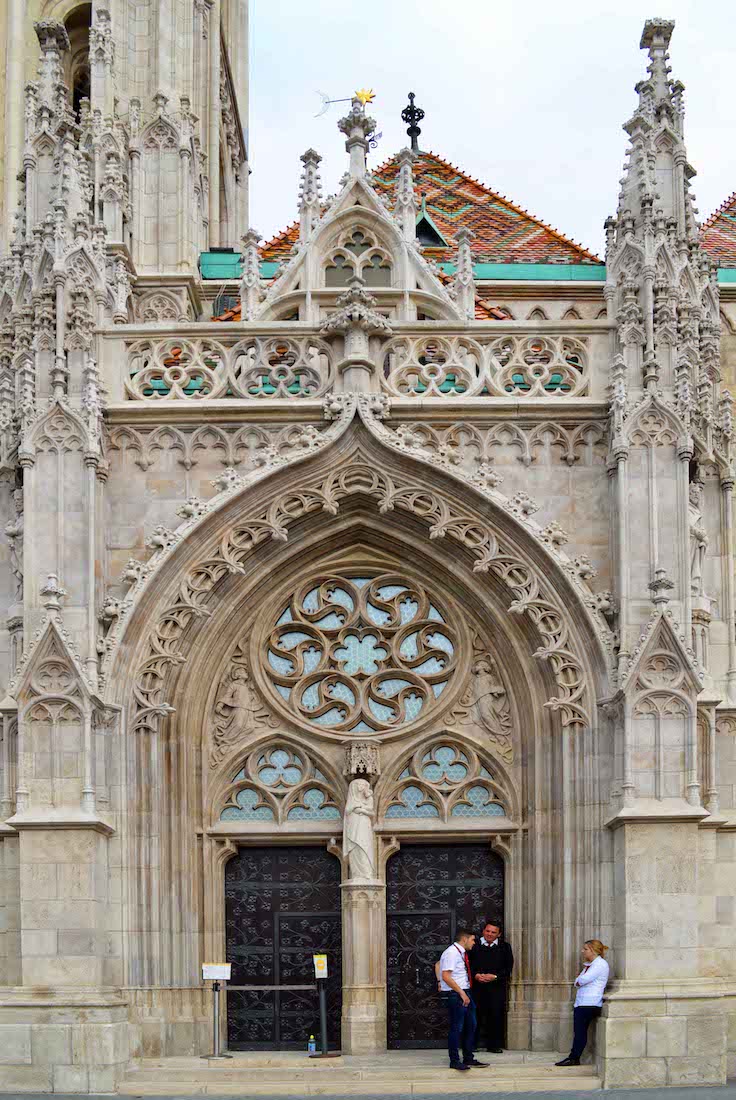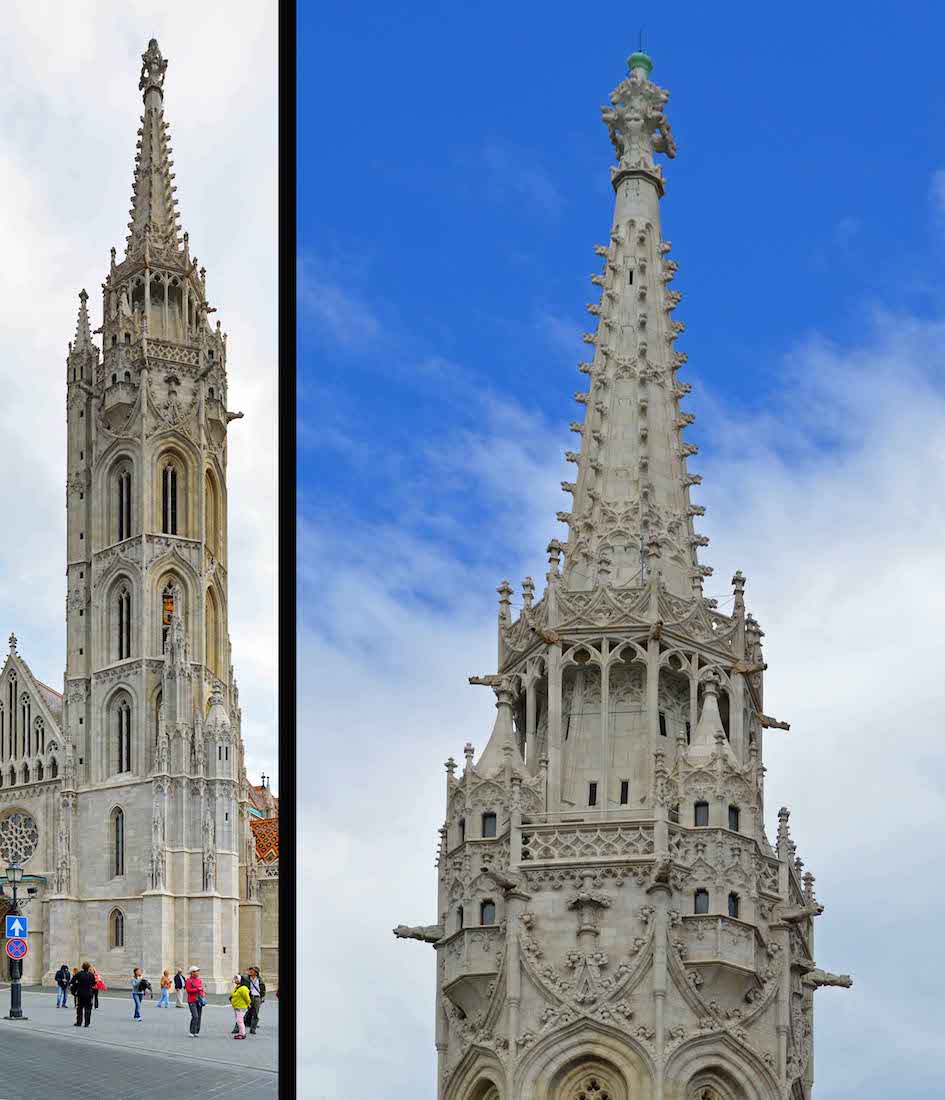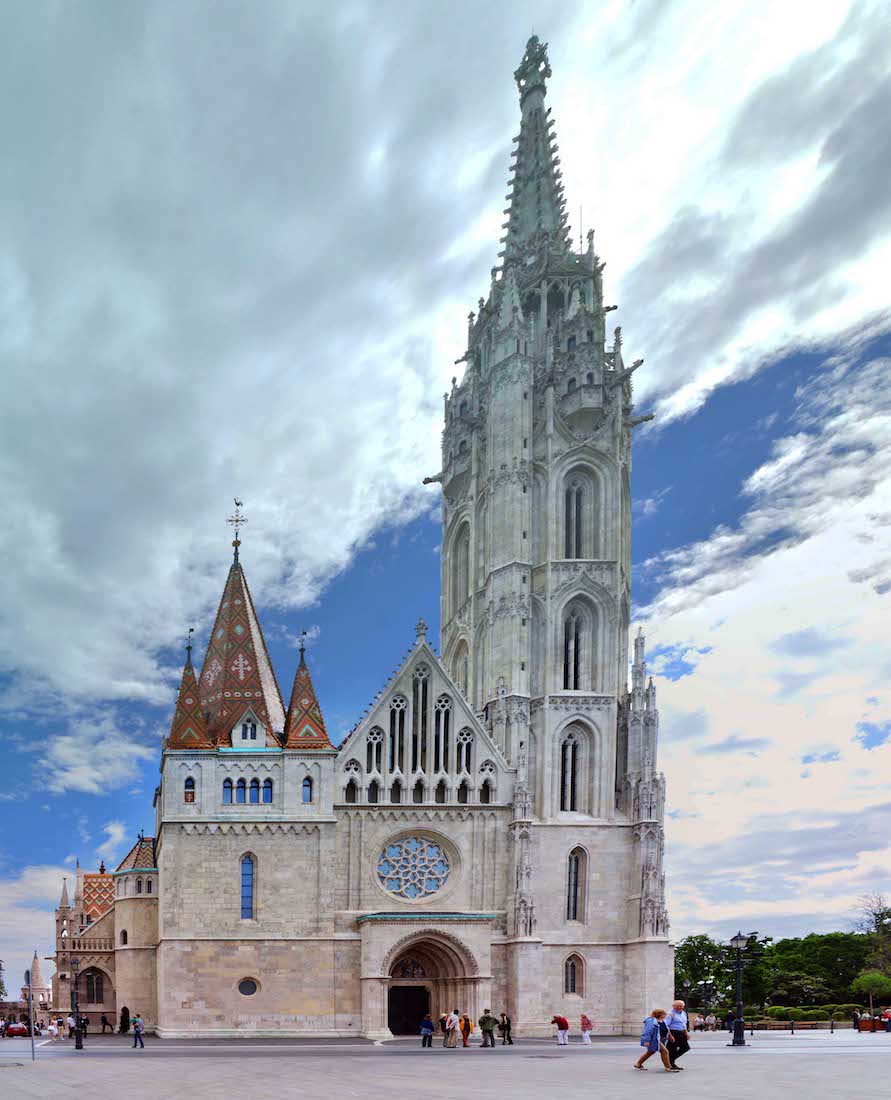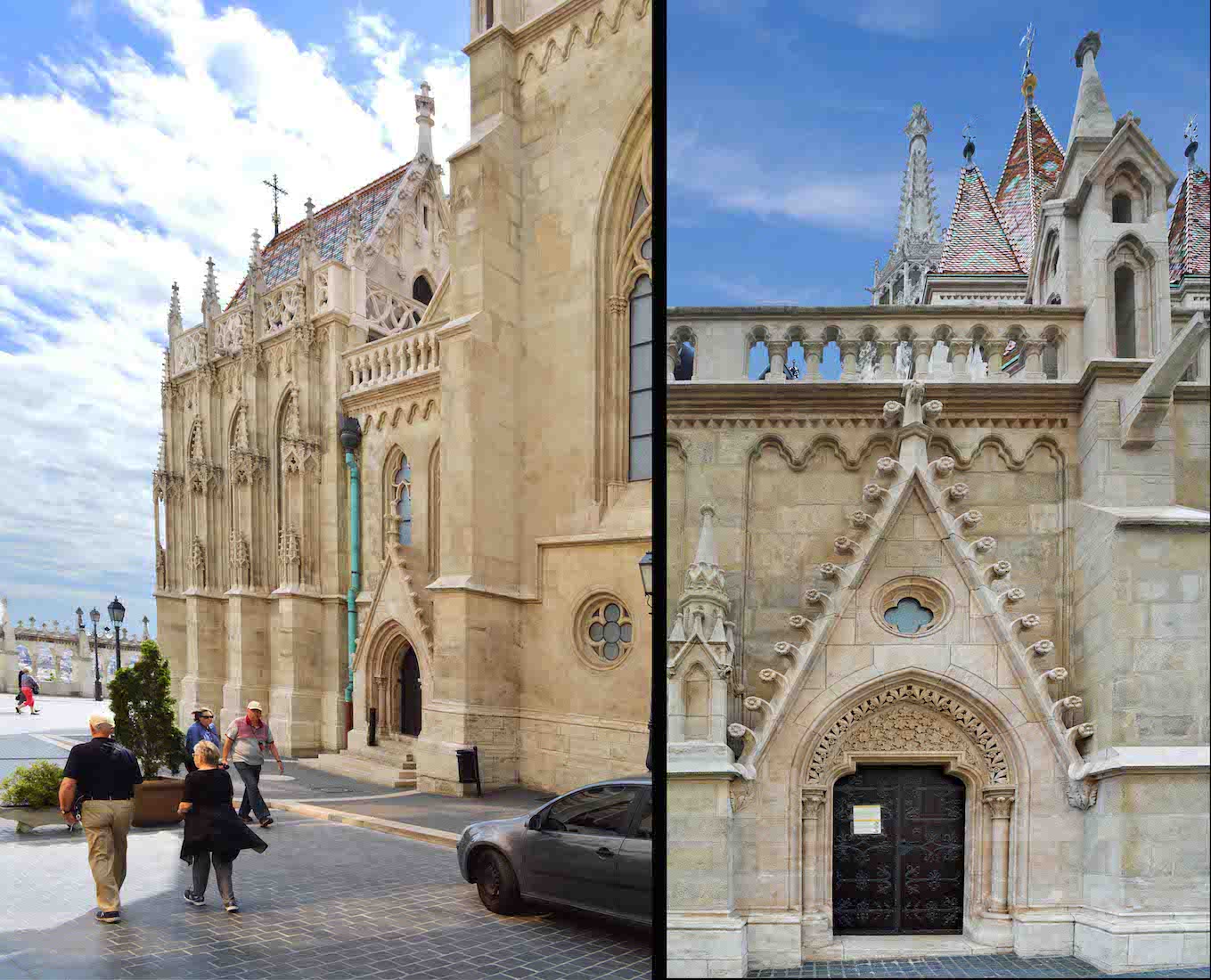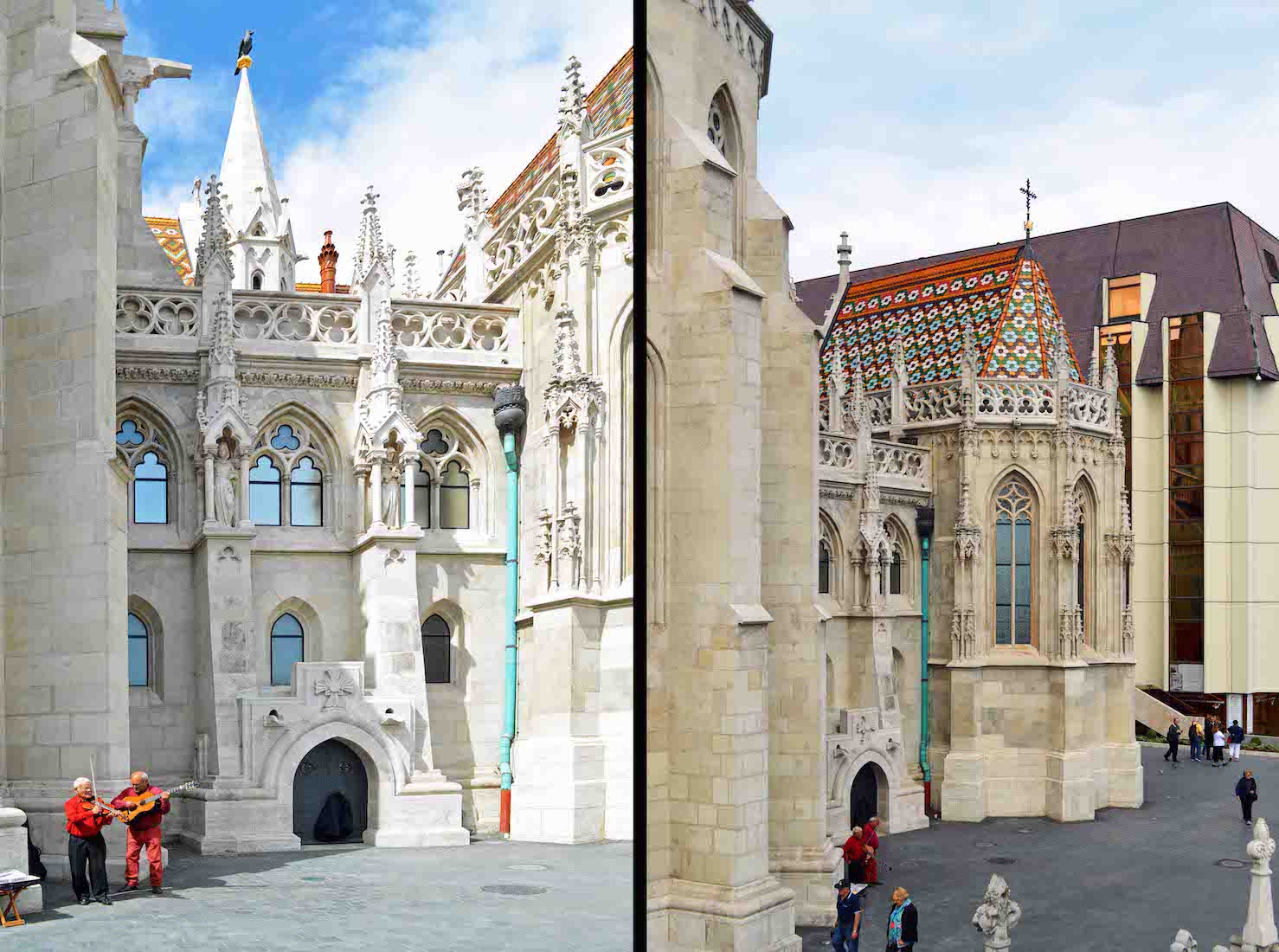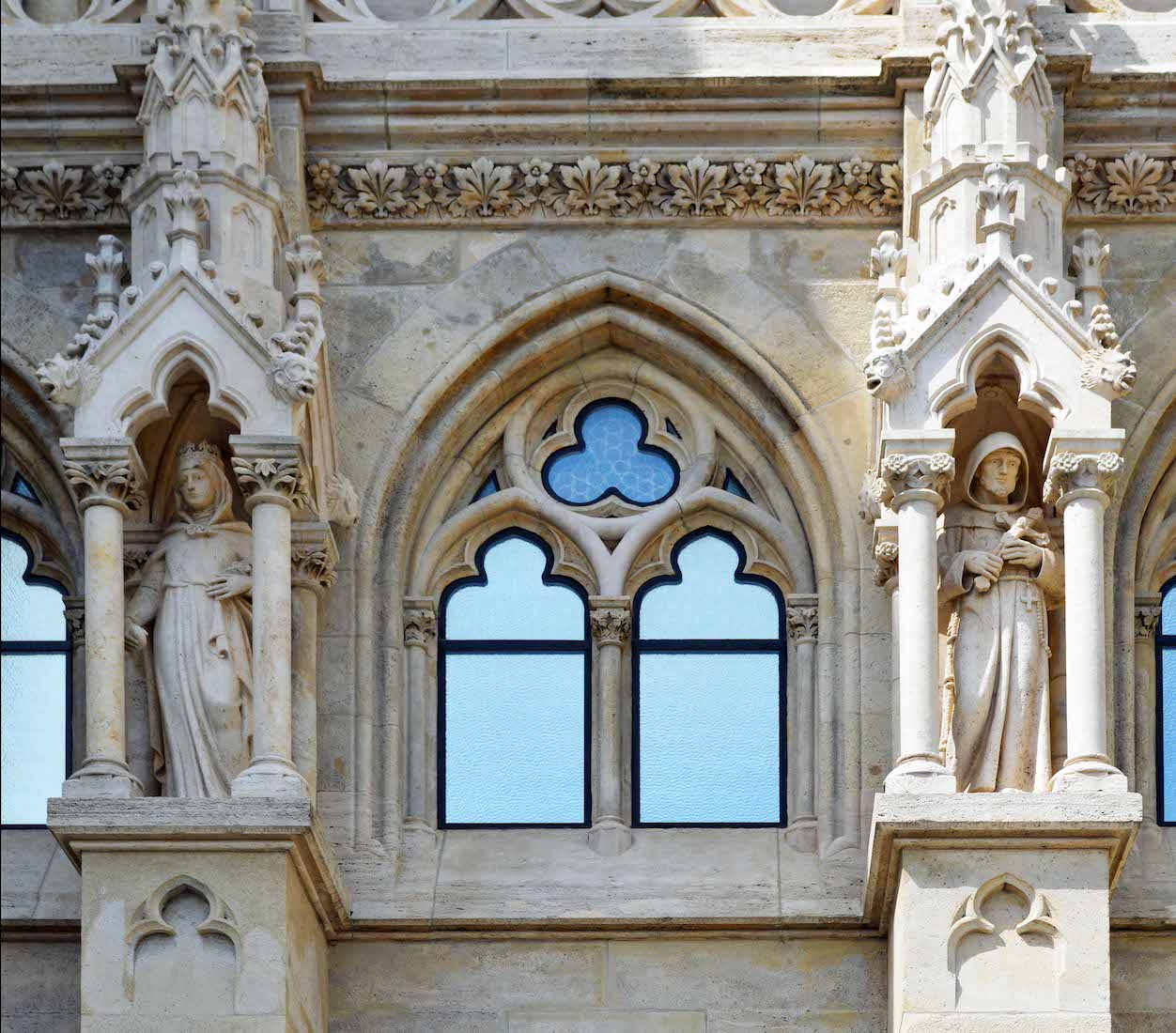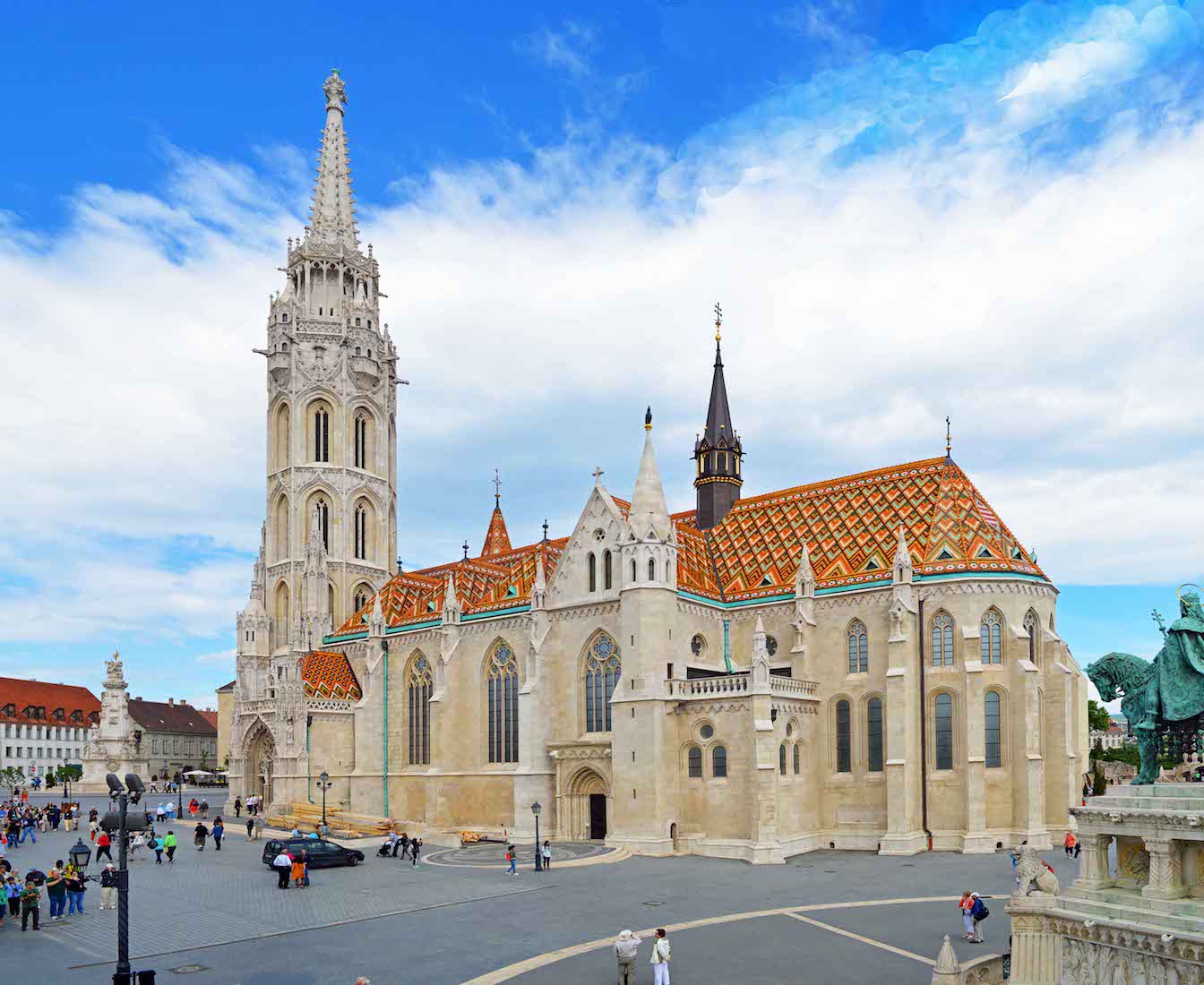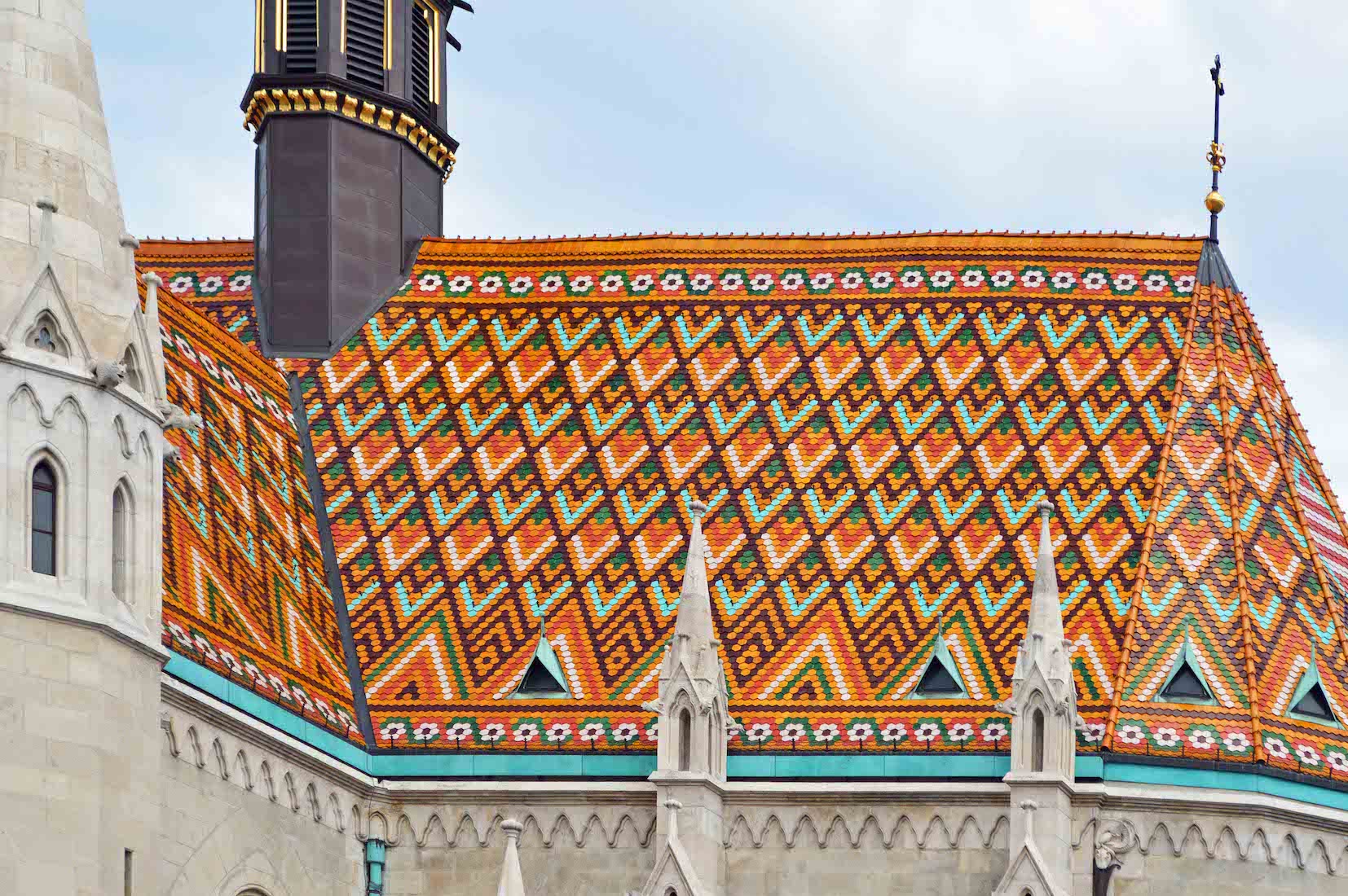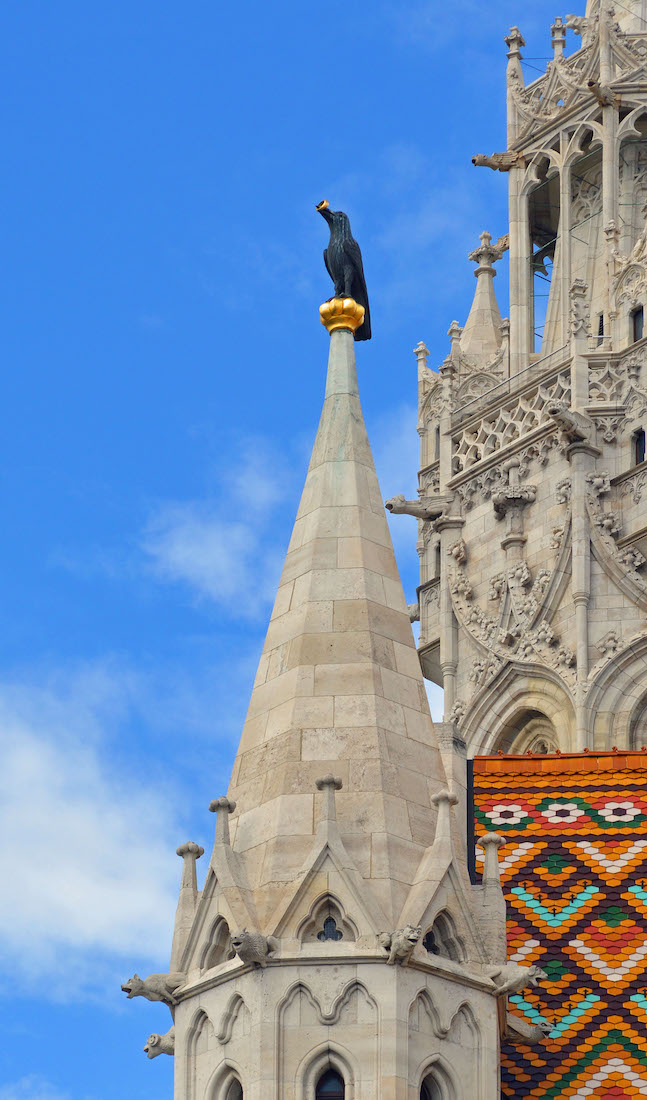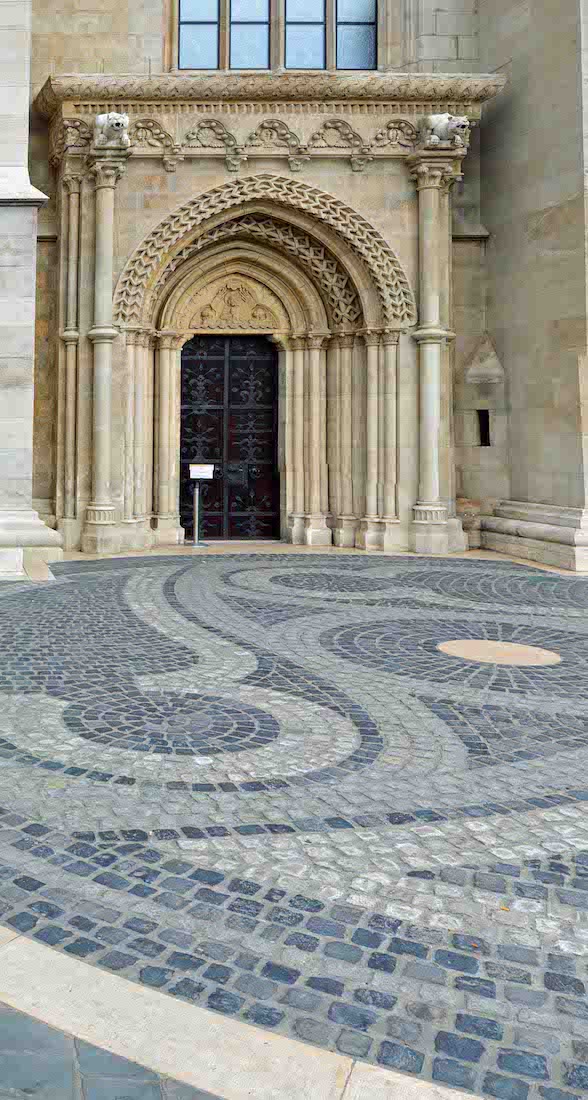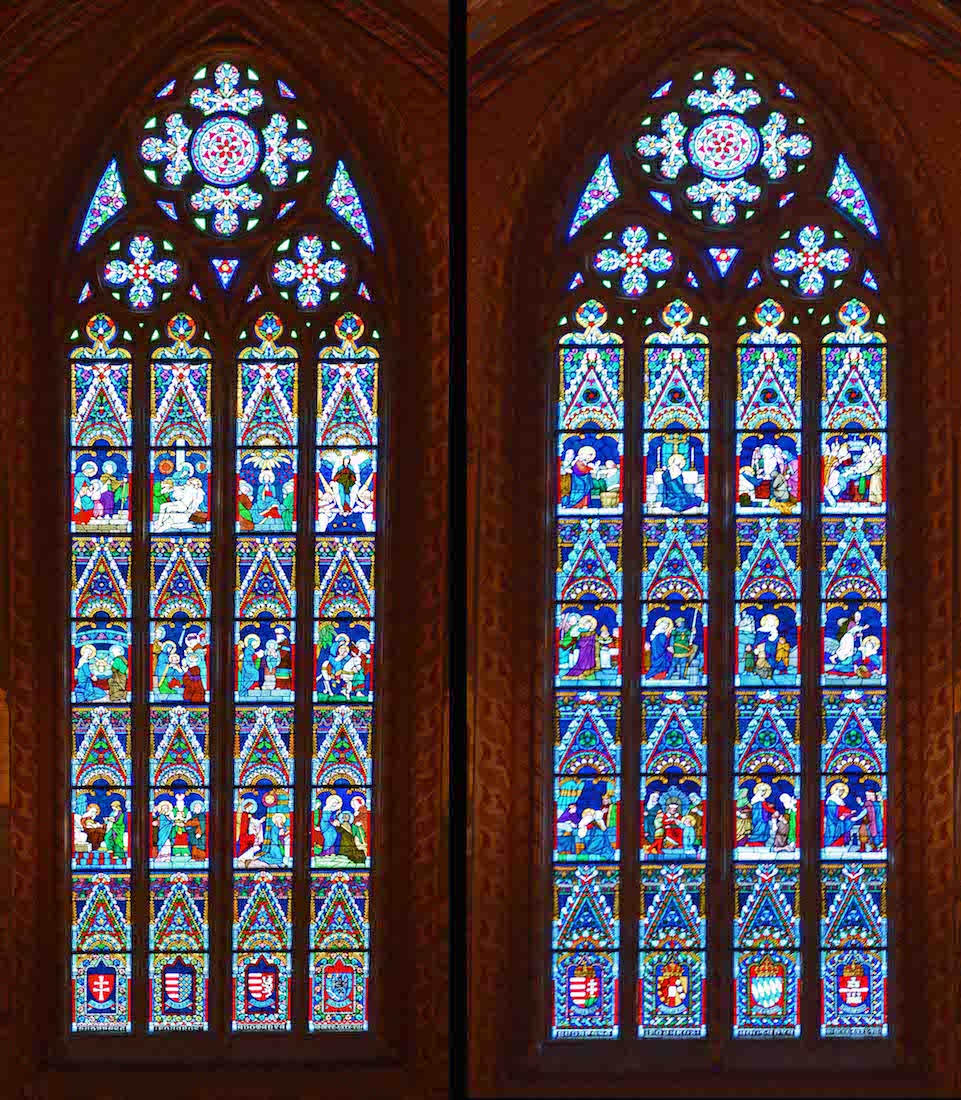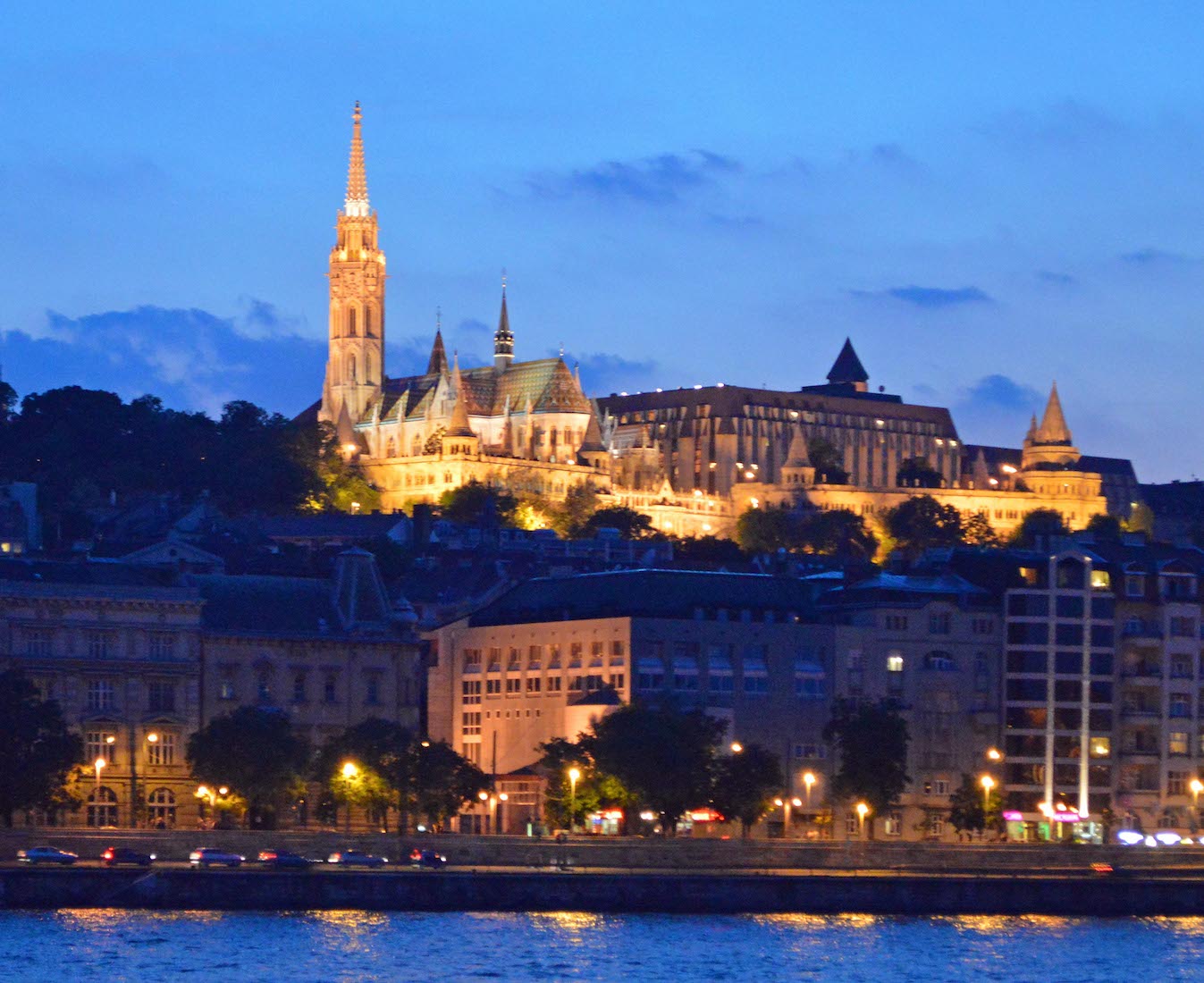
Matthias Church sits in a prominent position above the Danube on the high ‘Buda’ side of Budapest. It is beautiful from a distance, and even more spectacular close up! PLAN
2. SATELLITE VIEW
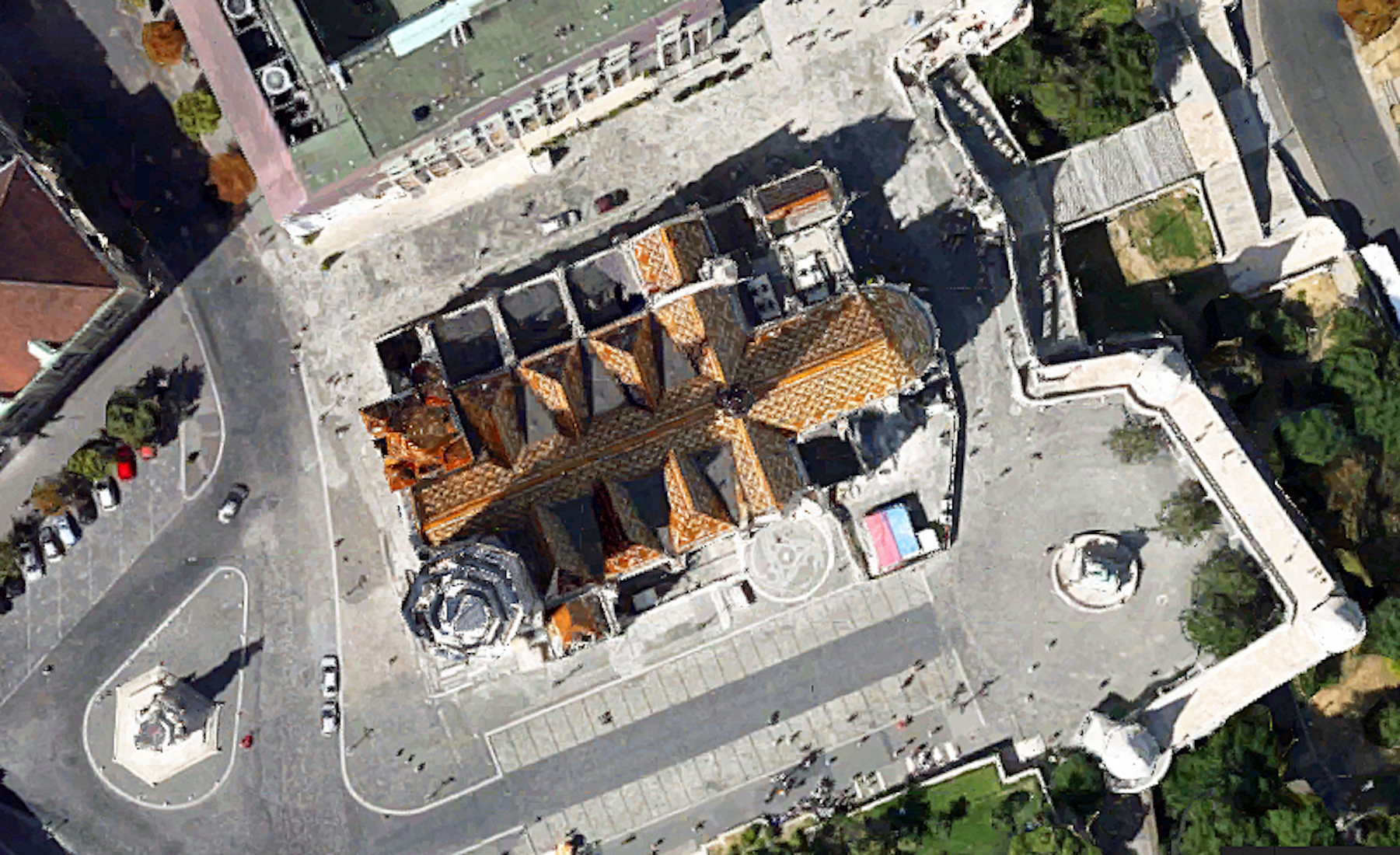
The main axis of the Church is about 20° off geographical east-west – perhaps just close enough for us to identify it with our liturgical East-West (with capital letters). We note the large statue in the West roundabout, the high tower at the South West corner, the unusual roof construction with chapels to the North, and the Eastern Apse.
3. SOUTHWEST APPROACH
This is the first view most visitors will have of the Matthias Church – the Church of Our Lady of Buda Castle. The tower and steeple are magnificent, as is the colourful roof behind. According to tradition, the first church was built here by St Stephen, first King of Hungary, in 1001 – 1038.
4. CHURCH MODEL
On our right we come to this model of the Church. In the model, to the East is the Fishermen’s Bastion from where some of the best views of the city can be obtained. The model gives a good idea of the layout of the Church.
5. WEST VIEW
From the West, the Church is viewed across the old market place, now known as Holy Trinity Square. There is a large statue in the middle of the Square.
6. HOLY TRINITY STATUE
A terrible plague broke out in Budapest in 1691, and again in 1709. The city decided to build a votive statue to the Holy Trinity. This statue was unveiled in 1713.
7. STATUE DETAIL
A panel on the base illustrates the final steps in building the statue, with an admiring crowd on the right. The depicted statue has a small panel on its base illustrating the final steps in building the statue ... .
8. THE HOLY TRINITY
The top of the statue depicts the Holy Trinity. At right is God the Father, at left Jesus the Son supporting the Cross, and behind (out of sight) is the ‘sun’ with a dove superimposed, representing the Holy Spirit.
9. EAST TO ST MARY’S DOOR
Just by the tower on the South wall is the ornate St Mary’s Door. I initially wondered why they chose aquamarine for the guttering and downpipes, but it picks up one of the colours in the roof tiles.
10. ST MARY’S DOOR
This is an attractive entry to the Church. We notice the ‘star and moon’ weather vane on the gable, and the Madonna and Child on the column between the doors.
11. TOWER AND SPIRE
The graceful tower and spire can be seen right across the city. Notice the gargoyles! The early Church was a Romanesque-Gothic basilica, but Louis the Great carried out a major reconstruction around 1370, transforming it into a High Gothic hall church. The Mary Door was built at this time.
12. WEST WALL
As we walk around the Church, we especially notice here the small round window at left (in the Baptistry), and the small bottom window at the base of the tower (in the Loreto Chapel). Around 1460 King Matthias built a royal oratory beside the South side chapel. It collapsed, and was rebuilt in 1470. The Church gained its name from King Matthias who was a generous benefactor.
13. NORTH WALL
In 1541 The Ottomans turned the Church into a mosque: its walls were whitewashed and its medieval furnishings burnt. After Buda’s recapture in 1686 the Jesuits redecorated the Church in Baroque style, topping the tower with an onion dome.
14. ST STEPHEN’S CHAPEL
St Stephen’s Chapel is sited at the North East corner, and is linked across to the main Church by the sacristy. In 1867 Emperor Franz Joseph and Elizabeth of Austria were crowned King and Queen of Hungary. He had the Baroque features removed, and the Church assumed the form we see it in today.
15. SACRISTY SCULPTURES
The sacristy runs between the main Church and St Stephen’s Chapel. On this East wall are two statues, which appear to be a queen and a monk. But who are they?
16. MATTHIAS CHURCH
St Stephen astride his horse at right has a glorious view of the Church. Here we see from right to left, the rounded sanctuary apse, the small box of the Chapel of the Holy Cross next to the South transept with its entry door, two further South nave windows, St Mary’s door, and the tower. A dark but light-weight flèche sits above the crossing.
17. ROOF TILES
Matthias Church regained much of its former splendour with the work of architect Frigyes Schulek undertaken in 1873-96. The Church was restored to its original 13th century plan but a number of early original Gothic elements were uncovered. Schulek added new motifs of his own such as the diamond pattern roof tiles and gargoyles laden spire, ensuring that the work, when finished, would be highly controversial. The Church was the venue for the coronation of the last two Hungarian Habsburg kings, Franz Joseph in 1867 and Charles IV in 1916.
18. RAVEN AND RING
In the middle of the 15th century, two of Hungary’s kings died unexpectedly within seven years. At this dark moment, the Hungarians looked to a 15 year old boy, Matthias, for salvation. According to legend, Matthias’ mother sent for him with a raven with a ring in its beak. The raven supposedly flew non-stop from Transylvania to Prague and thus the boy king of Ravens was crowned. The raven-with-ring motif became part of the family crest, as well as the family name: Corvinus (Latin for ‘raven’).
20. SOUTH NAVE WINDOWS
There are just two stained glass windows in the South wall of the nave, obviously designed together. The window at left represents the life of the Blessed Virgin Mary, with the coats of arms of the kings who built the Church along the bottom. The right window tells the legend of St Elisabeth, who died in her 22nd year and is one of the most favoured saints in the continent.


